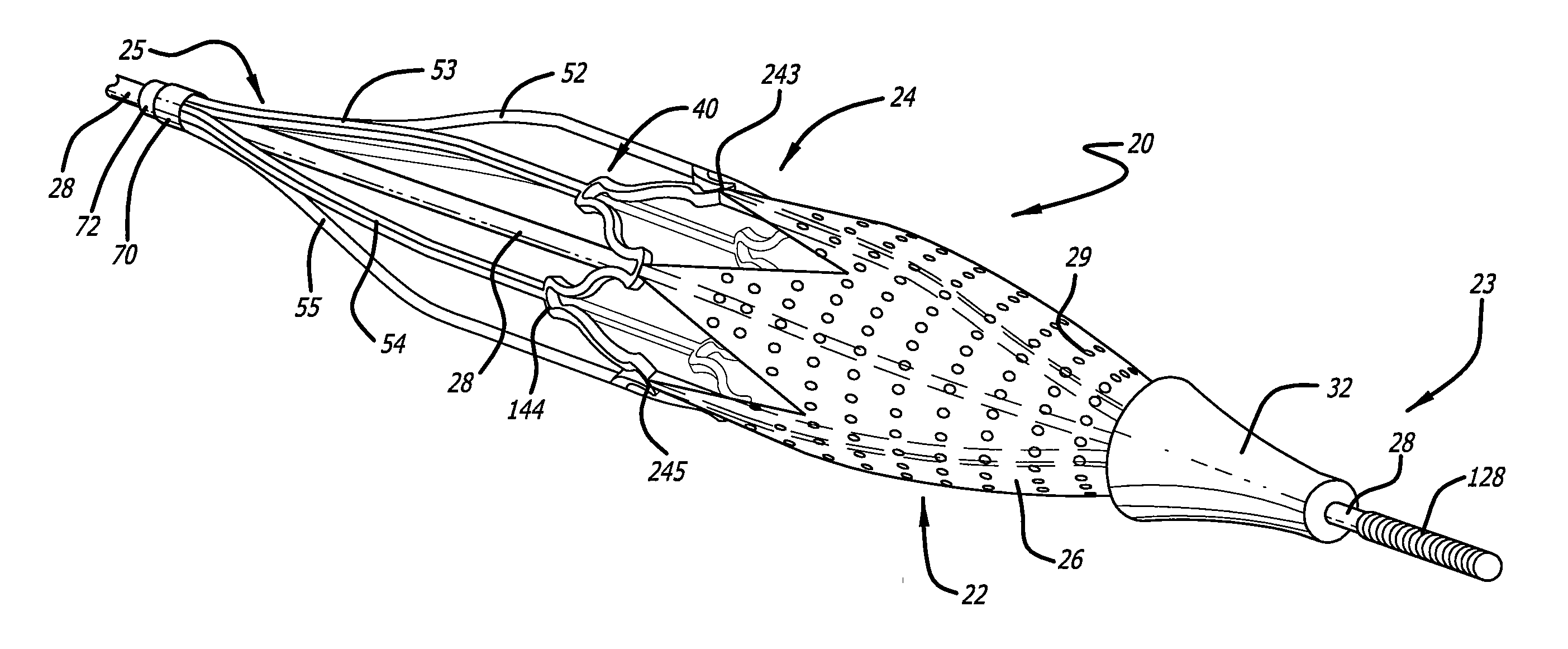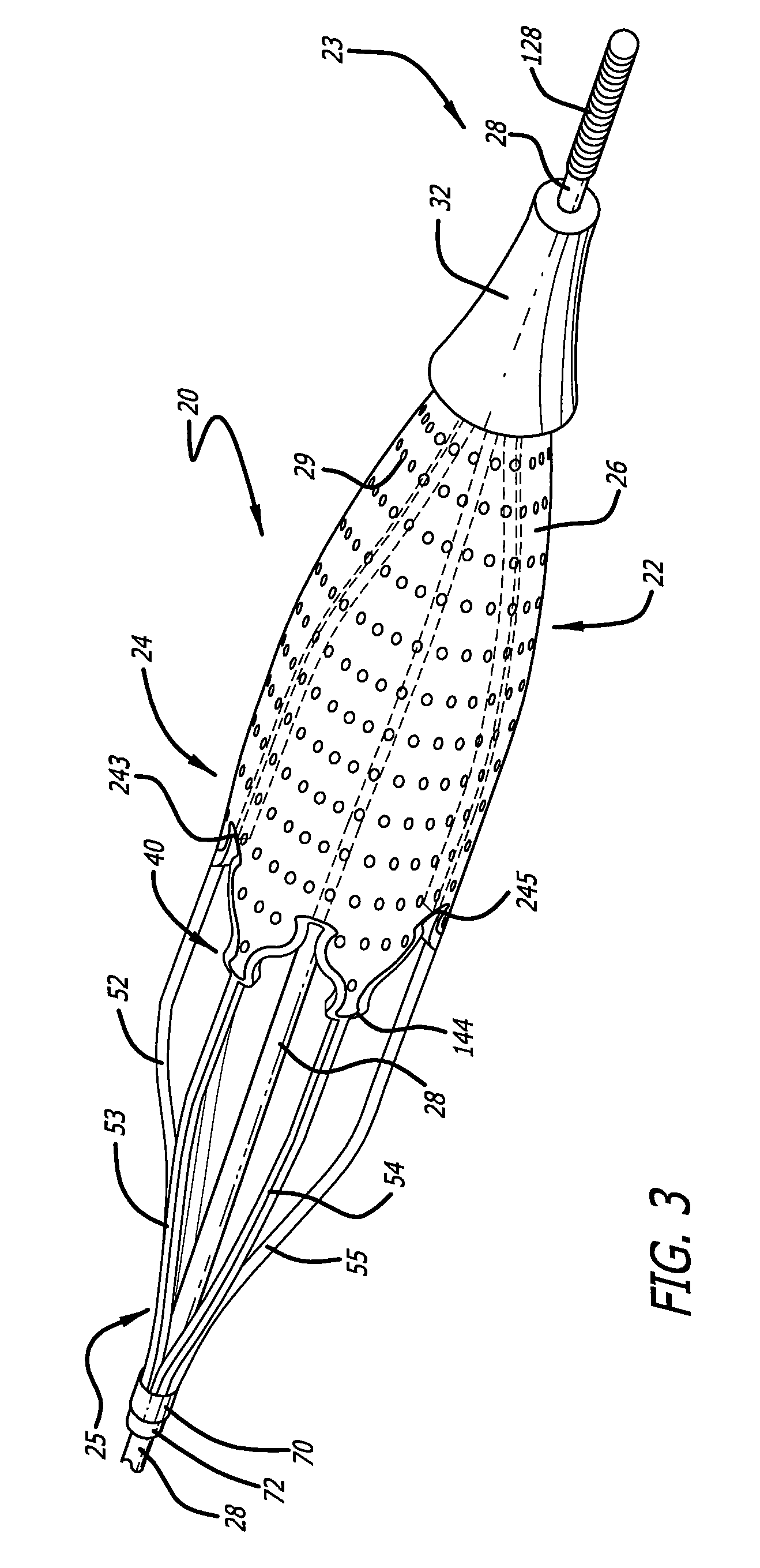Embolic protection device with open cell design
a protection device and open cell technology, applied in the field of filtering devices, to achieve the effect of improving the opposition of the vasculature wall and increasing flexibility
- Summary
- Abstract
- Description
- Claims
- Application Information
AI Technical Summary
Benefits of technology
Problems solved by technology
Method used
Image
Examples
Embodiment Construction
[0036]The present invention is directed to an embolic filtering device having an open cell configuration. The embolic filtering device includes a filter cage and a sleeve assembly used to filter embolic particles from a body vessel. The filter cage includes a strut assembly that is movable between an unexpanded position and an expanded position. The strut assembly includes struts that form the filter cage having an open cell design. The open cell filter cage design of the present invention is configured with struts constructed not to form a closed loop or cell. Such an open cell design may have at least one or more rings that preferably are not connected together at each vertex. An open cell filter cage design, however, can be constructed from one ring. Such an embolic filter cage reduces the landing zone of the filter cage and improves the contact of the filter cage to the vasculature wall.
[0037]It should be appreciated that the embodiments of the embolic filtering device 20 descri...
PUM
 Login to View More
Login to View More Abstract
Description
Claims
Application Information
 Login to View More
Login to View More - R&D
- Intellectual Property
- Life Sciences
- Materials
- Tech Scout
- Unparalleled Data Quality
- Higher Quality Content
- 60% Fewer Hallucinations
Browse by: Latest US Patents, China's latest patents, Technical Efficacy Thesaurus, Application Domain, Technology Topic, Popular Technical Reports.
© 2025 PatSnap. All rights reserved.Legal|Privacy policy|Modern Slavery Act Transparency Statement|Sitemap|About US| Contact US: help@patsnap.com



